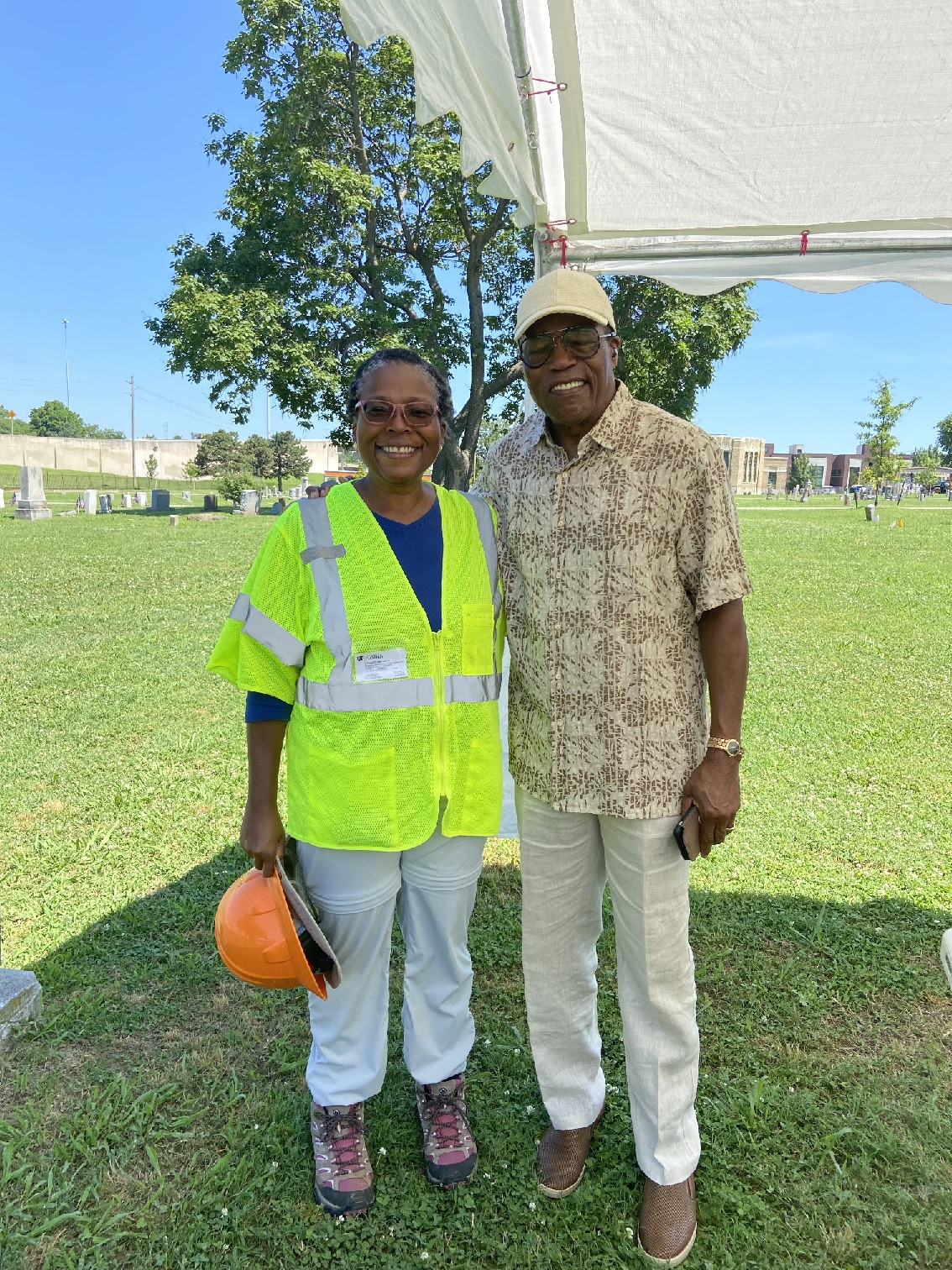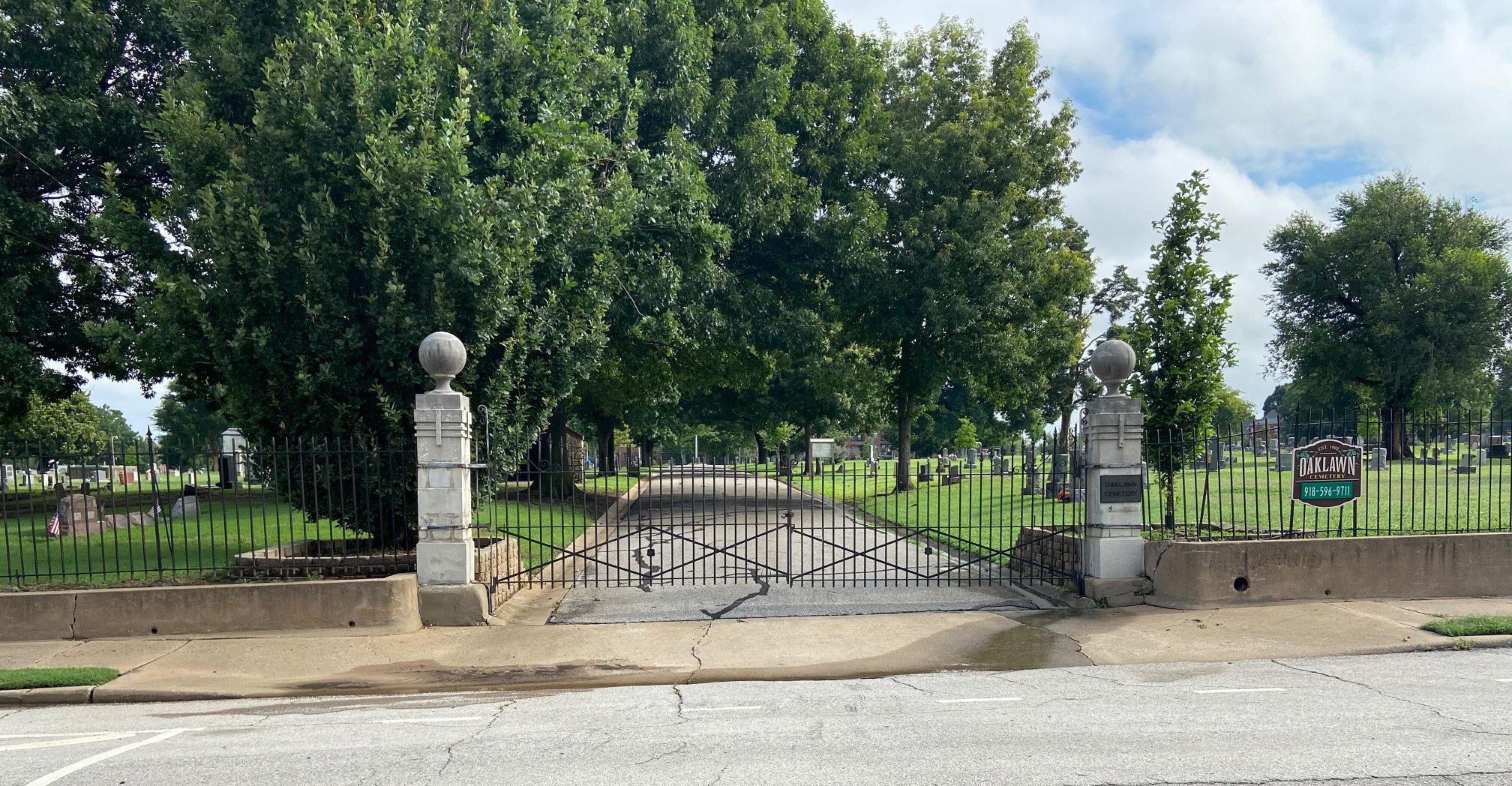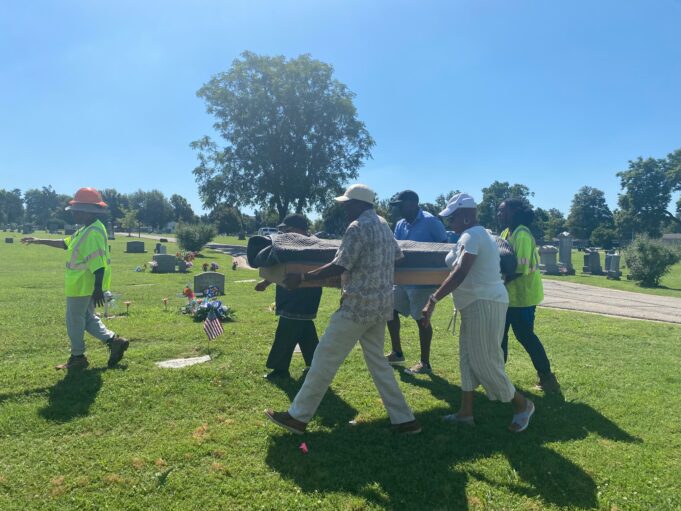by William P. Muhammad
TULSA, Okla.— Black activists, local Black leaders and forensic anthropologists, continue to uncover remains from what is thought to be an unmarked mass grave in a local cemetery near Interstate 75. They are investigating one of many sites alleged to contain victims of the 1921 Tulsa Race Massacre. The razing of the city’s popularly known Black Wall Street district in Greenwood continues to motivate those seeking justice on their behalf 100 years later.
Lifetime Tulsa resident Kristi Williams, a member of the 1921 Tulsa Mass Graves Oversight Committee and descendant of a survivor who passed away in the 1980s, said her great-aunt, Janie Edwards, was a teenager attending a film at the Black-owned Dreamland Theater at the time of the attack. She said, aside from her family member, others enduring the harrowing days of the massacre implored her to share their experiences with the public and to never let it slip from history.
“I befriended two of the survivors who have passed away now, Otis T. Clark and Wes Young,” Ms. Williams said. “I got a chance to know them and hear their stories and become friends with them. They always told me to never forget what happened and don’t ever let other people forget what happened,” she added.

Through Tulsa’s Black Wall Street Massacre, at the hands of angry torch-wielding Whites, 40 square blocks of a once wealthy and affluent Black community burned to the ground, displacing thousands and murdering untold other numbers of men, women and children. All of the carnage stemmed from unfounded allegations of a young White female elevator operator against a young Black man.
Mr. J. Kavin Ross, chairman of the mass graves investigation committee, and son of former state representative, Don Ross, who worked years informing the American people and the world of Tulsa’s hidden human rights crimes invariably omitted from school curriculum, said the effort to locate the remains of massacre victims while keeping their memory alive continues to be an ongoing task.
“There are those that try to control the narrative, but I think the narrative in and of itself is so powerful that no one is really in control of it,” Mr. Ross said. “The story is so powerful, that there’s no trying to sugarcoat it, no one can try to put a spin on it, if you think in terms of the deaths and the toll and the photographs,” he explained. “The survivors’ stories are the narrative and the experiences that they went through at five, nine and 15-years of age.”
Pointing out that there have been attempts by others to control the historical account, Mr. Ross said, the story is nonetheless intact and that the search for remains has been a long time coming, including those in other suspected locations in and around Tulsa, as surmised through a state bill authored by his father.

“We are going to go to other sites around the city and we’re following the information that was left behind in 2001 by the final report of the Tulsa ‘race riot’ commission report,” he said. “The commission’s report talked about the various sites around the city and outside the city. One was Oaklawn Cemetery, which is where we are currently doing investigations.”
Among those calling for accountability from both city and state officials is Tulsa City Council Chairwoman Vanessa Hall-Harper. Explaining that she grew up only blocks from the historical boundaries of the Greenwood neighborhood, and having heard little if any mention of the massacre in school textbooks, she said it was through her affiliation with the African Ancestral Society that she dedicated time and energy toward uncovering the facts and to remember its legacy.
“As far as the investigations, people (and) leaders well before me have been working on that and demanding that,” City Council Chairwoman Hall-Harper said. She told The Final Call that inquiries into mass graves were made more than 20 years ago, but were halted by the mayor and the leadership at that time.
“We were working with a young lady who was a reporter with The Washington Post doing a story on the gentrification of Greenwood and while we were driving around taking her on a tour, and giving her a history on what Greenwood was, we mentioned the massacre in 1921 and we talked about the mass graves,” Chairwoman Hall-Harper explained.
“When she got back to her editor, they said they wanted to change the story from gentrification to these mass graves; that was in 2018 and it hit the front page of The Washington Post. When that story hit the newspaper, very soon after, the current mayor announced that he was going to reopen the investigation,” she said.
With the unearthing of the mass graves, as led by University of Florida scientist and forensic anthropologist Dr. Phoebe R. Stubblefield, and with the high probability of more sites being found in and around Tulsa, the likelihood of the number of confirmed victims increasing beyond the estimated 300 is high.
Handling newly discovered remains with dignity and care is just as important to local clergy involved with the investigations as is the finding of new gravesites. “There were some testimonials of people who were alive during that time who remembered seeing bodies dumped in mass graves and they could remember some of these areas, so from investigations and the different testimonies, over a period of time, they’ve come to a point and to a place where they decided that they would dig in certain areas,” said Bishop Melvin F. Cooper of Greater Highway Ministries and pastor of World Won for Christ Family Life Ministries in Tulsa.
“We’ve unearthed 35 (from an unmarked location) at the Oaklawn Cemetery and they’re at the lab where they are doing forensics and DNA (and) I know there were five children that they had exhumed from the mass graves.”
Agreeing that the seriousness, sensitivity and gravity of Tulsa’s 1921 Race Massacre demands redress, the lengths to which local and state officials went to cover it up, and the ensuing fallout upon survivors and their descendants 100 years later, justice demands more than just conversations about race and symbolic gestures from government and society.
“Our people must come together and stop allowing those not of our community into our meetings where these important issues are discussed and plans such as reparations and strategies for proper compensation are made,” said Student Minister Jamal Ali Muhammad of the Nation of Islam Tulsa Study Group. “We have to be both courageous and wise in how we move forward.”













